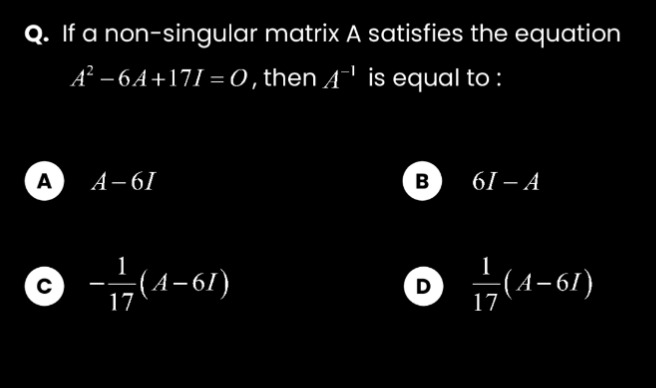Question
Question: If a non-singular matrix A satisfies the equation $A^2-6A+17I=O$, then $A^{-1}$ is equal to :...
If a non-singular matrix A satisfies the equation A2−6A+17I=O, then A−1 is equal to :

A-6I
6I-A
-\frac{1}{17}(A-6I)
\frac{1}{17}(A-6I)
-\frac{1}{17}(A-6I)
Solution
Given the matrix equation A2−6A+17I=O. Since A is a non-singular matrix, its inverse A−1 exists. We can multiply the given equation by A−1 from the left:
A−1(A2−6A+17I)=A−1O
Using the distributive property of matrix multiplication:
A−1A2−A−1(6A)+A−1(17I)=O
Using the properties of matrix multiplication (AB)C=A(BC) and scalar multiplication (kA)B=k(AB):
(A−1A)A−6(A−1A)+17(A−1I)=O
Using the properties of inverse matrix A−1A=I and identity matrix IA=A, IX=X:
IA−6I+17A−1=O
A−6I+17A−1=O
Now, we want to isolate A−1. Rearrange the terms:
17A−1=O−A+6I
17A−1=6I−A
Divide by 17:
A−1=171(6I−A)
We can rewrite this expression as:
A−1=171(6I−A)=171(−A+6I)=−171(A−6I)
